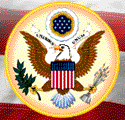 [Presidential Directives and Executive Orders]
[Presidential Directives and Executive Orders]
For Immediate Release
September 26, 1996
Investments in research and education are a centerpiece of this Administration's investment in America's future. These investments are increasingly important for our nation's prosperity, security, and quality of life in the knowledge-driven society of the twenty-first century. The Administration's investments in this area are significant with over $12 billion being invested in universities for research, as well as considerable support for education at these institutions.
The President recently received several letters from national, political, corporate and education leaders saying that the nation's universities are going through a period of stress. These letters included a letter from the President's Committee of Advisors on Science and Technology (PCAST) that recommended a government-wide policy and administrative review of our university research system. It is clear that both the public and private sectors, including universities, have had to undergo difficult restructuring over the past few years. We have all had to look hard at why and how we do things. We have had to become more focused, more efficient, and prioritize our activities. To sustain our national level of innovation for the long term, it is appropriate to stop to examine the data on what stresses these universities may be faced with and whether the Federal government might be contributing to them.
1. Research Partnerships. The agencies should provide their best current assessments about how budgets, programs, policies, and regulations may have impacted research partnerships among universities and the Federal government, including facilities not sited at universities but serving large university research communities.
2. Education. Our principal resource for maintaining leadership in research and for capitalizing on its advances is our talent pool of well-trained scientists and engineers. They are the wellspring of new ideas and new solutions to challenging problems. Our universities have served the nation exceptionally well in this regard and must continue to do so. The agencies should review their support of undergraduate, graduate, and postdoctoral science and engineering education. Effectiveness in advancing the research and education linkages should also be considered.
3. Administration and Regulation. The Administration is committed to streamlining administrative and regulatory procedures. Indeed, significant progress has been realized. The agencies should assess the results of streamlining with respect to the support and oversight of university research and identify opportunities for further progress. The review should include not only administration of research funding agreements but associated issues such as intellectual property rights, certification processes, and regulatory oversight. The goal is to minimize costs and paperwork while preserving the needed level of accountability in spending public funds.
The evaluation should be completed by June 30, 1997. Any information that might be useful for the FY 1998 budget process should be provided to the Assistant to the President for Science and Technology as appropriate. Significant differences in views among agencies should be noted in the report.